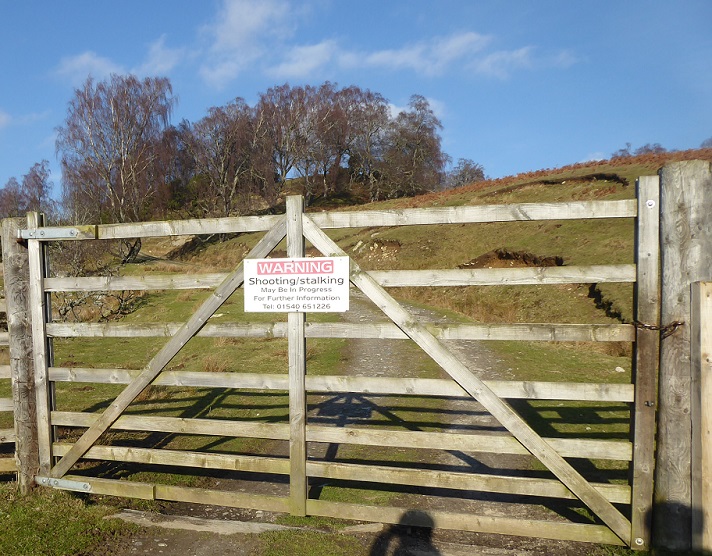
On Monday I went for a bike ride on the Dunachton Estate with Dave Morris, a friend and fellow access campaigner. We rode from near Kincraig over to the River Dulnain and came across a number of advisory access signs, some good some bad, but one in particular really caught our notice.
A new moorland sign
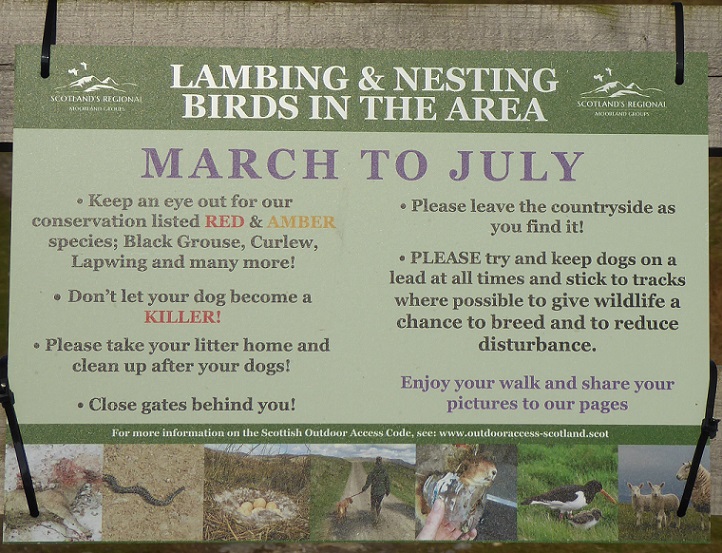
Scotland’s Regional Moorland Groups are a fairly recent front for grouse moor sporting interests which last year launched an offensive against the draft Cairngorms National Park Partnership Plan, leafleting households through the National Park (see here). This had some success because a number of the proposals in the draft plan that could have constrained the way sporting estates were managed were then watered down. What is interesting from an access perspective is how this sign differs from the Welcome to the Moor signs which have been criticised on parkswatch for a number of years (see here for example):
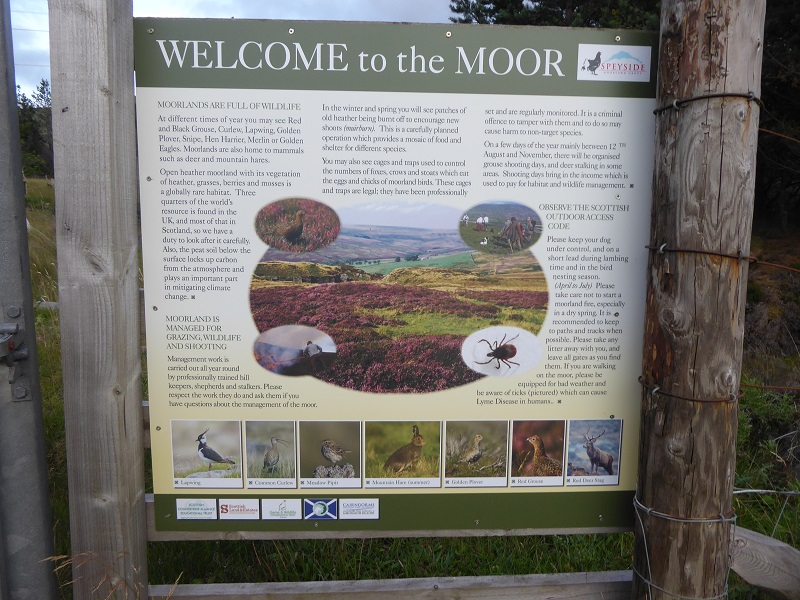
Compared to the Welcome to the Moor sign the new sign:
- Only applies March to July, rather than all year: an improvement but that is still four months;
- Clearly links it advice about sticking to the path where possible to lambing and ground nesting birds, rather than moorland management in general ;
- Has dropped the false “Welcome”, followed by a recommendation to keep to the path where possible (all year round), and instead after giving similar advice says “Enjoy your walk”. Nice but what about cyclists and horseriders?
- Like the Welcome to the Moor sign asks people to keep dogs on a lead rather than “close control during these months. Given the number of dogs that have not been properly trained, I can understand the temptation to simplify what was agreed in SOAC although for those people who, like gamekeepers, can control their dogs the message will still stick in the craw.
Overall the new sign appears an improvement compared to the previous one with people only being requested to keep to the path for four months, not twelve. Sowhat is going on?
The primary argument that sporting estates now use to defend intensive grouse moor management is to claim it is good for wildlife, particularly wading birds, and these species will die out unless predators, the same predators that have been eliminated to boost red grouse populations, are strictly controlled. Hence the reference on the sign to red and amber listed birds, i.e. species in trouble.
I suspect the intended recipients of this message are less walkers – who gamekeepers know are very unlikely to disturb breeding birds (dogs are another matter) – but conservation organisations, both statutory and non-statutory. The point about re-framing the debate on intensive grouse moor management as being about the future of waders is that anyone who then presses for reforms can be portrayed as a threat to birds.
Of course the traps littering grouse moors rather undermine the claims that their owners care about wildlife but they now appear to have realised this. The secgtion on traps in the Welcome to the Moor sign has been removed. Better not to draw attention to what is going on and set traps out of sight of popular routes
What is most striking about the new sign, however, is the logo of the CNPA, which was was and still is on many of the Welcome to the Moor Signs, is missing. That is despite the new sign being arguably being more compliant with SOAC! This once again highlights the CNPA’s longstanding failure (see here) to uphold people’ s rights to walk off path as well as removing any justification for the Welcome to the Moor signs remaining in place.
Other access signs we came across
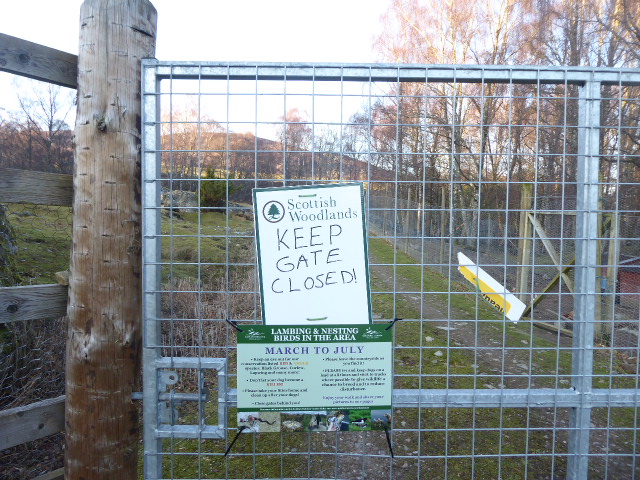
Above one of the moorland groups signs was an example of a helpful sign. When you come across an open gate it is often difficult to know what to do as the old advice under the country code was to leave gates as you find them. That works most of the time, but does not deal with situations where people fail to close gates behind them. Had this gate been open when we passed there would have had no doubt about the right thing to do!
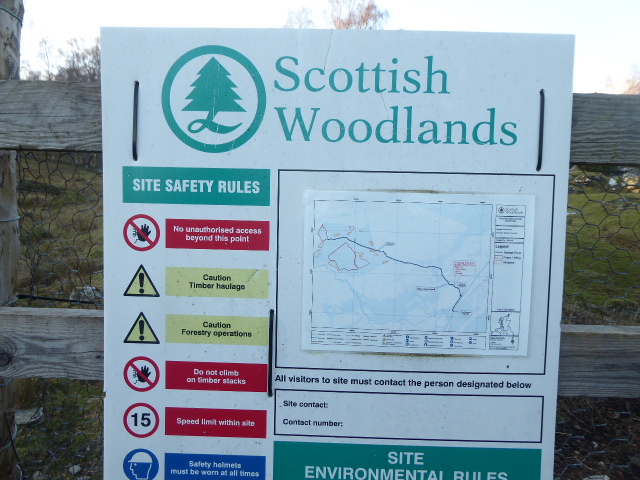
I commented on a similar Scottish Woodlands sign recently. The problem is the first stop symbol and the words “no authorised access”. It is unlawful as worded and if intended for vehicles only, should say so.
Higher up the hill there was another sign from Scottish Woodlands explaining to visitors what to do while timber harvesting was taking place (the timber harvesting appeared finished and it was lying on the ground):
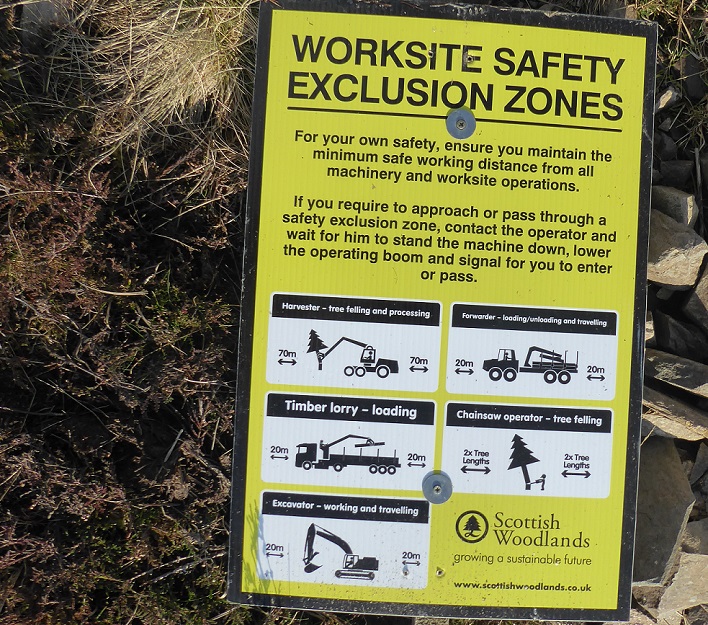
Note that the sign doesn’t say you cannot walk through an area where timber harvesting is taking place but it does provide very sensible advice about how to keep safe. This is another good sign.
And back near the A9 having passed by Dunachton Farm along another track we came across this sign:
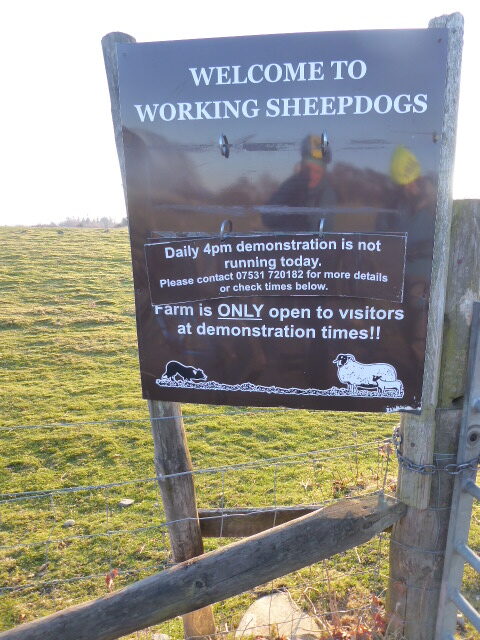
The trouble with this sign, like the signs warning about shooting, is the ambiguity. If it meant the farm business is only open at certain times that would be fine. But many people could take this as meaning the whole farm, the track we walked along, the fields on either side etc was closed at other times. That would be an unlawful contravention of access rights.
Wha needs to happen?
It is very hard to get short messages about access right and to ensure they reflect the law, unless they are about simple matters like “close the gate”.
In my view most of the signs we saw on Dunachton were not to bad, although how they will be interpreted also depends on the person. For some people being warned shooting may be taking place can be helpful (we passed a stalker with an ATV and a hind in the back), for others offputting. It is the same with photo of the adder on the new moorland sign, its purpose is ambiguous: is it there to deter or attract?
However intended, if a sign deters some people from exercising their right to roam according to the principles set out in SOAC it should be treated as an obstruction and removed. I will be reporting both the Scottish Woodland “no authorised access” and the new moorlands sign in respect to its advice to stick to the path to the CNPA. We will see what happens.

Tragedy of the commons- what happens to wildlife when people are insensitive to their need for minimal disturbance at critical periods of the year (nesting to fledging time.
Studies in Europe have shown that disturbed ground nesting birds will abandon their nests following ‘near miss’ events where potential predators (including loose running dogs) come into close proximity of the birds nest. That is why in for example ‘kun i snoor” (only on a lead) signs are prominent where people walk their dogs during nesting time, otherwise the commonly shared and valued wildlife species are lost to all. People manage to respect this with predator species, eg badger setts, hen harrier or order grime falcon nest sites, etc, but these predators also require prey species to thrive – by driving out other ground nesting species, we inadvertently harm the prospects of the apex predators. We all want the same thing, we assume we start with a half filled glass; ask yourself: am I helping to fill, or to empty the glass?
We are all aware of our rights, but too often somewhat less so as to our responsibilities. Tragedy of the commons ensures the result. The wildlife know nothing of our help or harm.
Nice to see sensible forestry signs, in contrast to the situation north of Tobermory last summer where large areas of land including a popular trail were completely blocked off for timber extraction (which was signed as finishing in February!) despite the fact that it was clear there had been no activity for some time.
“Dogs on leads” is regrettable but understandable as too many dog walkers don’t seem to understand that if their dog does not obey voice commands it is “not under control” which is an offence under the Dangerous Dogs Act:
“A dog shall be regarded as dangerously out of control on any occasion on which there are grounds for reasonable apprehension that it will injure any person or assistance dog, whether or not it actually does so, (section 10(3) Dangerous Dogs Act 1991). This is not an exhaustive definition and the ordinary meaning of the words should still be applied. If a dog is factually deemed to be acting in a way that could be termed ‘dangerously out of control’, for example attacking livestock, a prosecution may still be brought.”
I never like restrictions but the number of times when out for a walk I have had to fend off someone’s dog while they futilely shout its name is ridiculous. “He/she wouldn’t hurt anybody” they invariably say, unknowingly quoting every dog owner ever interviewed by the media after their animal has savaged a child. That, and the amount of dog logs on any popular path, either on the ground or hung from trees in bags, is disgraceful.
I came across an apparently unlawful sign at the entrance to the track up Ben Gulabin, just north of the Spittal of Glenshee – just about visible on Google streetview (https://www.google.co.uk/maps/@56.8255338,-3.4525646,3a,15y,337.19h,89.91t/data=!3m6!1e1!3m4!1s18Jgo9YlM4pUCe0YBzjL4w!2e0!7i16384!8i8192?hl=en). “Shooting in progress. Please keep to tracks. Thank you.” When I was there (18th Feb) there was definitely no shooting in progress, and given the Grouse season ended in December and the hind season on 15th Feb, I’m not sure what shooting might have been in progress. The sign was of a hinged design, so the “shooting in progress” part could be covered up by an alternative sign warning not to disturb ground nesting birds (I didn’t read that side in detail). I assume the estate shows the “ground nesting birds” side when appropriate and the “shooting in progress” for the entire rest of the year. Lazy at best, an attempt to erode access rights at worst.
I’m all for right to roam and access to paths, hills. Etc but, as mentioned above, we have a responsibility to observe warnings whether they be for our own safety or the safety of birds, animals etc. Why would you put yourself at risk by demanding access to a track or path where dangerous machinery is operating and expect the people working there to stop and move every time someone wants past, they’ll never get the work done! I think some common sense is required in these situations. As for dogs off the lead, what about people who are afraid of dogs, why should they have to put up with someone else’s dog bounding up to them? I walk and cycle and have met many sensible and considerate dog owners who put their dog on a lead if someone approaches but others don’t, in particular paid dog walkers who usually have a pack of other people’s dogs that the have little or no control over. This can be very intimidating even frightening if they run towards you and the person in charge of them can’t control them. Let’s consider each other in the countryside and not assume we’re in the right all the time.
With all the timber extraction currently going on in Scotland I have encountered it many times in recent years and it has generally been carried out in a realistic manner with sensible warning signs giving safe distances from various types of machinery and co operation between operators and walkers. The Tobermory situation is an exception and it is difficult to see why it was necessary to impose a complete exclusion over a large area for an extended period without even updating the signage when the project apparently badly overran its original timescale.
Most timber harvesting operations take place well away from tracks and paths, it is only the final truck loading which takes place on tracks intermittently at a certain stage. In this situation recently it was only necessary for me to make sure that the grab operator had seen me and he was happy to pause for a few seconds at a suitable point to allow me past.
I also had the chance to watch a driver perfectly reversing a wagon and drag outfit uphill on a narrow twisty track – serious driving skills and he made it look easy!